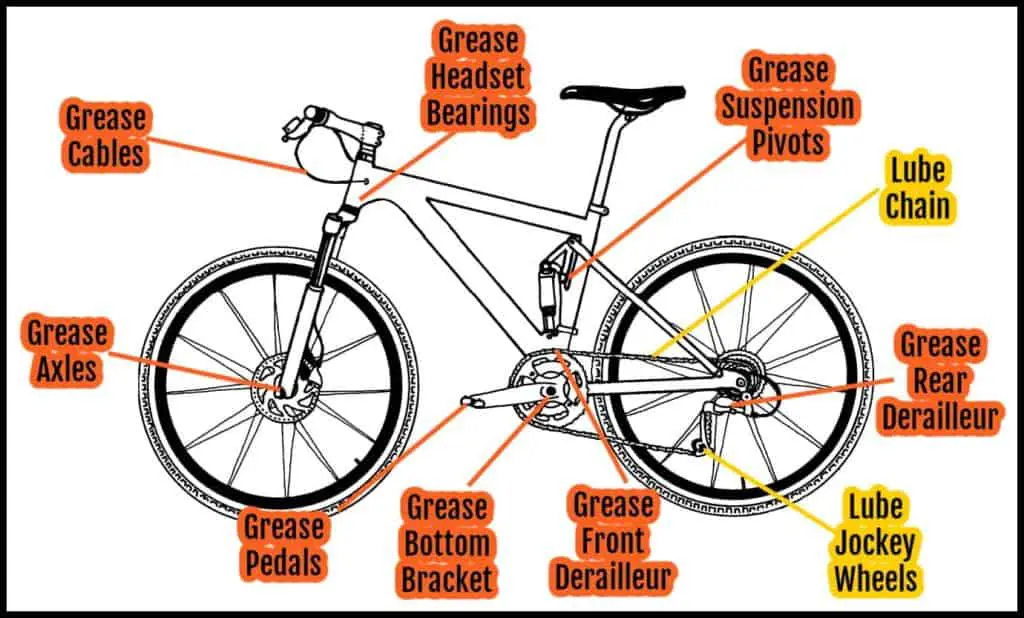Lubricating Your Mountain Bike: Choosing the Right Products for Different Conditions
For mountain bikers, their love affair with the trails is a rugged and passionate one. But as you take your bike through the physics-defying climbs and thrilling descents, you’re not just putting your skills to the test—you’re also challenging the endurance of your trusty two-wheeler. One of the most critical aspects of mountain bike maintenance is ensuring that every part hums with the smoothness to match the agility demanded by the wild. This means choosing the right lubrication products tailored to the conditions you ride in most. Here’s a comprehensive guide to keep your ride running like new under any circumstance.
The Importance of Proper Lubrication on a Mountain Bike
Imagine the moving parts of your bike to be a tiny ecosystem where friction is the enemy of efficiency. Every pedal stroke, gear shift, and wheel rotation involves metal against metal or metal against moving polymer. Lubrication is what ensures these interactions are not only smooth but also don’t cause premature wear and tear. Proper lubrication also wards off potentially damaging contaminants like moisture and dirt.
Prolonging the Life of Your Components
Good lubrication keeps your drivetrain and suspension working efficiently, reducing the force required to operate your bike. Lower forces mean less wear, and less wear means a longer life for your gear. It’s a simple equation, but one that’s all too often neglected by even the most seasoned bikers.
Saving You Money in the Long Run
When your bike’s components are well-maintained, they need replacing less often. Smart lubrication choices also mean you’ll be spending less time and money on maintenance, and more time doing what you love—riding trails.

Factors to Consider When Choosing Bike Lubricants
Not all lubricants are created equal, and what might be the gold standard for one rider could be a poor choice for another. The nature of your trail, the time of year, and even the altitude can dictate different needs for your biking experience.
Dry vs. Wet Lubricants
- Dry Lubricants are best for dry, dusty conditions. They are fast, but not as durable under wet conditions.
- Wet Lubricants are designed to stay put in wet conditions and are usually more durable, but can attract more dirt in dry conditions.
Trail Conditions
- Dusty Trails: Heavy dust can necessitate frequent cleaning which could mean using a dry lube for less gunk build-up.
- Wet Weather: Here, a wet lube is essential to disperse water and protect against corrosion
- Extreme Temperatures: At high temperatures, many lubes can turn runny or evaporate, low temperatures demand a lube that remains effective in the cold.
Recommended Lubricants for Different Conditions
The right lubricant for your bike can mean the difference between a great ride and a frustrating one, and even determine whether your components last for the long haul.
Wet Conditions
In wet conditions, the goal is to keep water from corroding metal and to maintain lubrication.
- Silicone-based Lubricants: These are great at repelling water and preventing corrosion. They also tend to keep dirt from sticking to the drivetrain.
- Wax-Based Wet Lubricants: A popular choice for rain-soaked riders, these lubes offer good cleanliness and durability under wet conditions.
Dry Conditions
Where water and mud aren’t your enemies, dust is.
- Teflon-based Lubricants: They provide a coating on your chain and components that reduce friction and don’t attract as much dust as other alternatives.
- Ceramic-based Dry Lubricants: Known for their extremely low coefficient of friction, they are excellent at repelling dirt and moisture.
Extreme Temperatures
When you’re dealing with temperature extremes, whether hot or cold, you’ll need a product that can handle it.
- Synthetic Oils: These offer consistent performance across a broad temperature range without becoming too thick or too runny.
- Molybdenum Disulfide (Moly) Greases: These can handle high-pressure applications and are great for colder temperatures.

Application Tips
Even the best lubricant won’t perform if it’s not applied correctly.
Cleanliness is Key
Before applying any lubricant, it’s crucial to clean your drivetrain thoroughly to avoid trapping harmful particles between the chain and the cassette.
Application Techniques
- Wet Lubes: Apply a drop on each chain link, spinning the pedals to work it in.
- Dry Lubes: Apply sparingly to the top of the chain line. Excessive application can attract dust and defeat the purpose.
- Other Components: Don’t forget to lubricate your derailleurs, pivot points, brake and derailleur cables, and brake calipers.
Maintenance Schedule
How often you need to apply lubricant varies based on your riding conditions. Be prepared to apply new lubricant before and after significant trail challenges or every couple of weeks in normal conditions.
Benefits of Using the Right Lubricants
Enhanced Performance
A well-lubricated bike operates with minimal resistance, meaning every pedal stroke turns into forward motion efficiently. You’ll also notice smoother, crisper gear shifts and response from your brakes.
Extended Lifespan of Bike Components
When your bike can move with minimal resistance, your components don’t need to work as hard or wear out as quickly.
Cost-effective Maintenance
A small investment in quality lubricants can save you a fortune in component replacements. Think of it as life insurance for your bike.
Conclusion
Your mountain bike is more than just a mechanical assemblage; it’s the extension of your adventure self, putting the power of exploration at your fingertips. Treating it well with the correct lubricant doesn’t just maintain its performance—it preserves the very essence of the mountain biking experience. In a world where the search for the perfect ride never ends, choosing the right products for every condition ensures your cycling odysseys are always a pleasure. It’s time to make lubrication not just another maintenance chore, but a crucial part of your ride commitment, and an ally to your biker soul.






